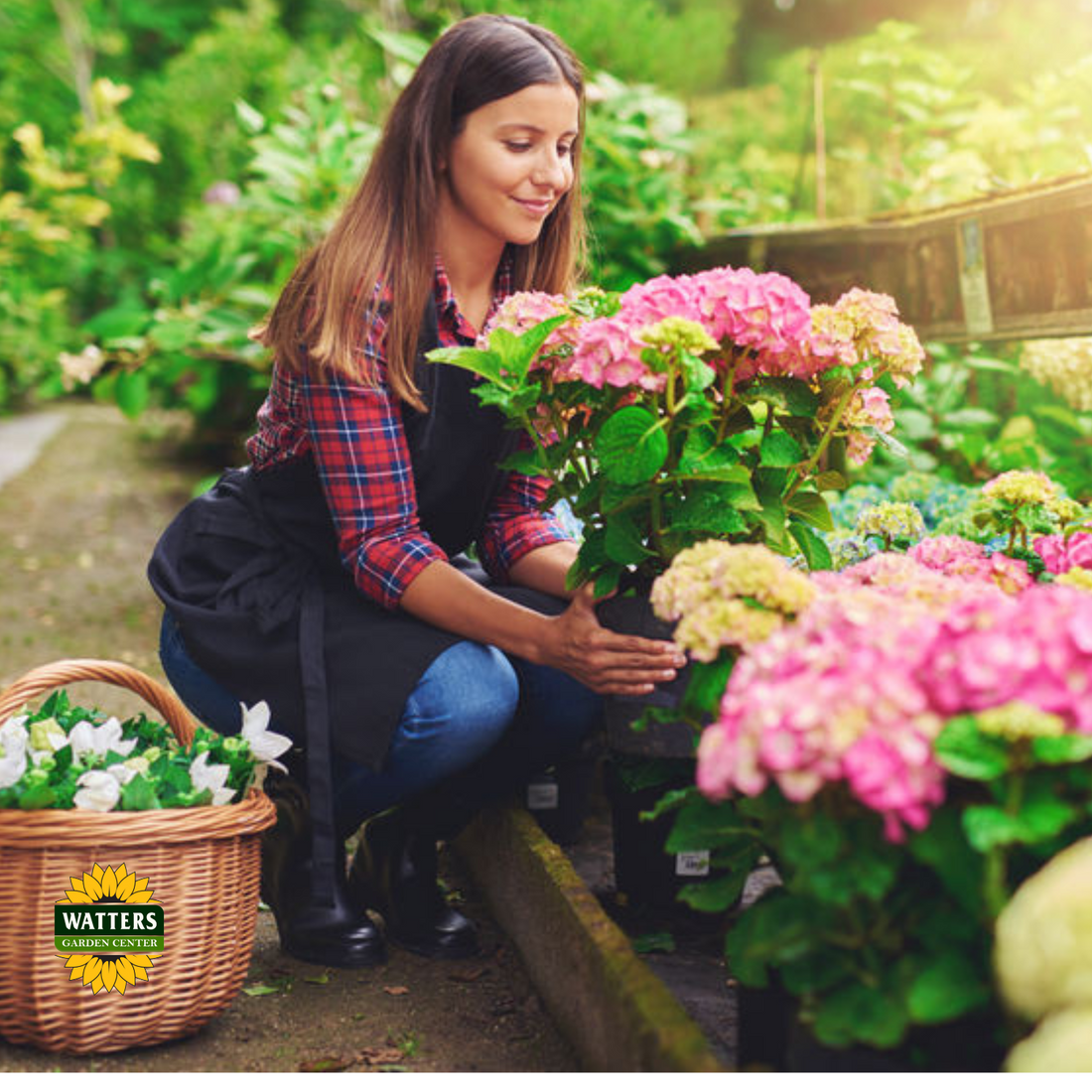
A Gardener's Guide to Vibrant Hydrangeas
Share
by Ken Lain, the mountain gardener
Hydrangeas have been popular garden plants for decades. These versatile shrubs thrive in granite soil, shady woodland sites, and almost anywhere between. You will find the most varieties starting in May and ideally planted. Hydrangeas have large, round flower clusters, while others have a slender delicate flowers. Showy flowers come in various colors, including bright blue, deep red, and pink, with mixed foliage. Once planted, hydrangeas proliferate, averaging 2' feet per year.
Botanical Name Hydrangea spp.
Common Names Hydrangea, hortensia
Plant Type Shrub
Mature Size Up to 12' feet
Sun Exposure Shade
Soil Type Well drained
Soil pH Any
Bloom Time Mid-summer through fall
Flower Color White, blue, green, red, pink, purple
Hardiness Zones 5-9
Native Area Asia, the Americas
Pinterest Board Serenade Hydrangea
Hydrangea Care
Most hydrangeas adapt to a wide range of conditions. They are generally hardy from USDA growing zones 5 to 9. And as long as they are planted in well-draining soil with plenty of Potting Soil, they grow.
Plan to water your hydrangeas regularly, especially in the heat of summer. And fertilize them twice per month with Watters Flower Power for best blooms. You also might need to do some pruning each year, but it shouldn't be excessive.
for best blooms. You also might need to do some pruning each year, but it shouldn't be excessive.
Hydrangeas do well in full Arizona shade to the partial shade provided by tall trees, especially if they receive morning sun with partial shade from the afternoon's heat.
Soil
Hydrangea grows well in containers planted directly into Watters Potting Soil. They tolerate many soil types as long as it drains. One of the perks of growing hydrangeas is changing their flower color. Although somewhat determined by cultivar, the color can be tweaked by the amount of aluminum in the soil and your soil pH. The soil pH determines how available aluminum is to the plants. Acidic soil (aluminum available to the plants) will provide blue flowers, and alkaline soil (less aluminum unavailable to the plants) delivers pinker flowers.
Have fun! Change flowers from pink to blue by decreasing your garden's alkalinity by adding Aluminum Sulphate to the soil in spring.
Water
Hydrangeas prefer deep irrigation weekly unless you've had rainfall. You slightly increase the amount of water given to plants during hot summer weather, but make sure they're not sitting in soggy soil.
Temperature and Humidity
Hydrangeas prefer mild temperatures. In areas with bitterly winters, dieback may be experienced. Protect your hydrangea from cold winds by planting them in a sheltered spot. A North to East facing site is ideal where temperatures remain more constant.
Plant Food
Most Hydrangeas are given too much chemical nitrogen producing a lush bush with few flowers. Apply Watters 7-4-4 All Purpose Plant Food every spring, summer, and fall for better flowers. Easter, July 4th, and Halloween are good holiday reminders for proper Hydrangea feeding.
Hydrangeas Toxic
Hydrangeas make people and animals sick when ingested. Symptoms of toxicity in both people and animals include nausea, vomiting, gastrointestinal upset, diarrhea, and lethargy. The leaves, buds, and flowers have higher concentrations of Cyanogenic Glycosidesthis.
Hydrangea Varieties
There are two main groups of hydrangeas: plants that bloom on the current year's stems and those that bloom on last year's stems. Varieties include:
· Mountain Serenade Hydrangea, Hydrangea macrophylla, grows to around 6' tall and wide and has leaves that reach approximately 6" inches long.
· Smooth Hydrangea, Hydrangea arborescens - grows 3' feet tall and wide and produces shades of white to pink flowers.
· Oakleaf Hydrangea, Hydrangea quercifolia, reaches 7' feet tall and wide and sports white to purplish-pink flowers.
Hydrangeas need minimal pruning. Reduce the size of your plant or prevent it from flopping over by removing the older canes after the flowers fade. This reduces crowding and encourages vigorous new growth. In early spring, remove dead or damaged wood by cutting branches back to a healthy set of buds. If you have a large, established bush, you can remove several of the older stems.
Until next issue, I'll be helping local gardeners grow better Hydrangea at Watters Garden Center.



